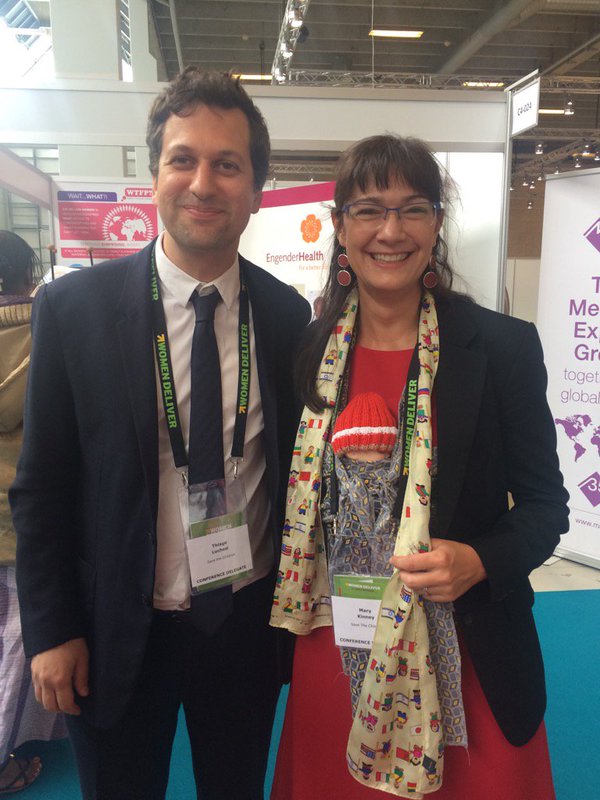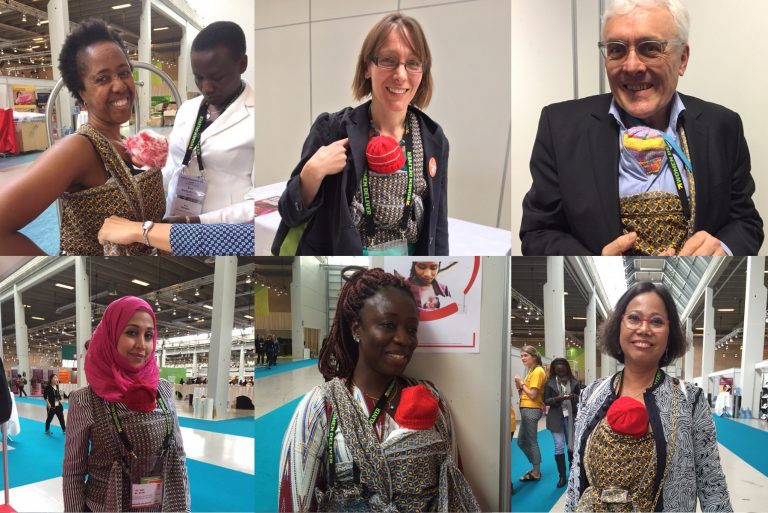By Mary Kinney, senior specialist, global evidence & advocacy, Save the Children
Recently a dedicated pediatrician invited me to visit her neonatal intensive care unit to see firsthand all of the work her team was doing to improve newborn care. Their efforts were impressive, especially given the crowded and under-resourced setting. One thing in particular stood out, however: not one mother was practicing kangaroo mother care (KMC) even though the unit had six dedicated beds for that purpose.
Every day, more than 41,000 babies are born preterm – before 37 weeks gestation – and preterm birth complications are now the leading cause of death among all children under 5 years, with over 3,000 dying each day.
KMC, a well-known, feasible, and cost-effective intervention, requires continuous skin-to-skin contact between the baby and mother for at least 20 hours every day and exclusive breastfeeding. Although the intervention could prevent thousands of these deaths, it is not being used effectively in most settings, and only a very small proportion of preterm babies receive this life-saving intervention.
In this facility, we asked mothers and caregivers why they were not practicing KMC. Their reasons included, “My C-section wound is too sore,” “Her mother is sleeping,” “I am too tired,” and “His mother is in the bathroom.”
What can be done to improve coverage and quality of KMC, in this hospital and around the world?
The KMC Acceleration Partnership (KAP), a global consortium of organizations active in promoting the uptake of KMC, is looking for answers to this question. The partnership has called for increased and concentrated action at global and national levels to achieve a 50 percent increase in coverage of KMC by 2020.
Dr. Queen Dube is a pediatrican who works closely with the Partnership to scale up quality KMC services in Malawi. She believes we need a shift away from the message that KMC is an easy or cheap solution. While it is less expensive and more effective than conventional neonatal intensive care, there are still costs to the health system, the mother, the family, and the community, all of which need to be considered in planning for scaleup. Quality KMC requires trained health workers to support and care for the mother and baby, space in a health facility for KMC beds, and community support for the mother to be at the facility and to care for her baby upon discharge.

In May 2016, Save the Children launched the “Kangaroo Mother Care Challenge” at the Women Deliver conference in order to raise awareness about some of these realities. The challenge asked people to practice KMC with a baby doll for 24 hours (including sleeping in an upright position with the baby still on the front of the person skin-to-skin). Twenty-five people agreed to take on the challenge. While only a handful succeeded in making it the full 24 hours, all of them told us what an eye-opening experience it was. Check out their stories below.
We are now taking the KMC Challenge to the meetings of the Council of International Neonatal Nurses and the International Pediatrics Association in Vancouver in August, and to additional meetings leading up to World Prematurity Day in November 2016.
Will you take on the Kangaroo Mother Care Challenge? Follow #KMCchallenge on Twitter to see who else does and share your experiences.

What people said about the KMC Challenge
I think the biggest challenge was trying to sleep at night. Trying to lie on my back, propped up with the for pillows that I had in my hotel room, and not rolling over onto the doll. I can only begin to imagine what it must be like for a mother carrying in KMC position a baby much heavier than my doll, who is peeing and pooing, needing feeding when she may only have rags for nappies, no spare clothes for herself, and no luxury hotel pillows to prop herself up with. These women are amazing, but let’s recognise the challenges to better support them and their babies.
Dr. Hannah Blencowe, LSHTM
The curious thing was that about 30 minutes after starting the doll KMC, I had the same feelings of sedation and calm that I recall having when I did KMC with my own children. Maybe there is a marketing opportunity here!
Dr. Anthony Costello, WHO
First putting on the wrap was incredibly complicated. Normally I would just use a scarf. I wore the baby for two hours, and during that time I experienced stigma and people were less willing to network with me. I was overheating and sweating which made me unprofessional in appearance. So I made the decision to take off the baby and put it in my purse, which is the “baby in a bag” scenario! What this really highlights is the challenge of doing good practice in kangaroo care.
Whitney Sogol, Concern Worldwide
There are positives and negatives. There are definitely women who have come up to me and said I couldn’t do that if I had a preterm baby.
Dr. James Litch, GAPPS
It is so difficult, so hard. But I only try to think that my mom carried me for three months since I was a preterm baby. That’s 1972. We have to go back to natural and go back to this approach of kangaroo mother care.
Endang Handzel, CDC
I took the challenge for about four hours. During that time, I found myself on high alert and being very sensitive to every move—checking every now and then to make sure the child was in the right position, not slipping down, neck not twisted, hat not off, and careful of not moving and twisting too fast. This was challenging and my reaction was total respect and appreciation to mothers who do this in real life to save the lives of premature babies.
Doris Maholo-Saydee
Personally, I was thrilled to have the opportunity to take part in this simulation of KMC. I’m happy to report that I succeeded in “wearing the baby” for the full 24-hours (even while sleeping) and I confess it was a bit hard to give the baby back at the end of the 24-hour period! I felt that I gained not only more attention, but also more respect and credibility while speaking about maternal/newborn health issues during the conference…while actually “practicing” KMC! The exercise raised the awareness of many colleagues (both within and beyond the conference venue), who were curious and intrigued enough to ask questions. This also made me improve my own understanding of and ability to explain to others the importance and impact of KMC.
I would like to share the following links to photos of me “wearing the baby” while speaking at Women Deliver:
Erin from @UNFPA announces #IDEOF theme this year: #EndFistula Within A Geneation #WD2016 pic.twitter.com/7FhG7ZOmkI
— EngenderHealth (@EngenderHealth) May 18, 2016
Erin Anastasi, UNFPA
It was a pleasure to join the KMC challenge during Women Deliver in Copenhagen.
Even though it was a doll, the wrap and skin to skin contact felt warm and cozy.
I would recommend this to anyone!
Pascale Boet, Svizera Europe
